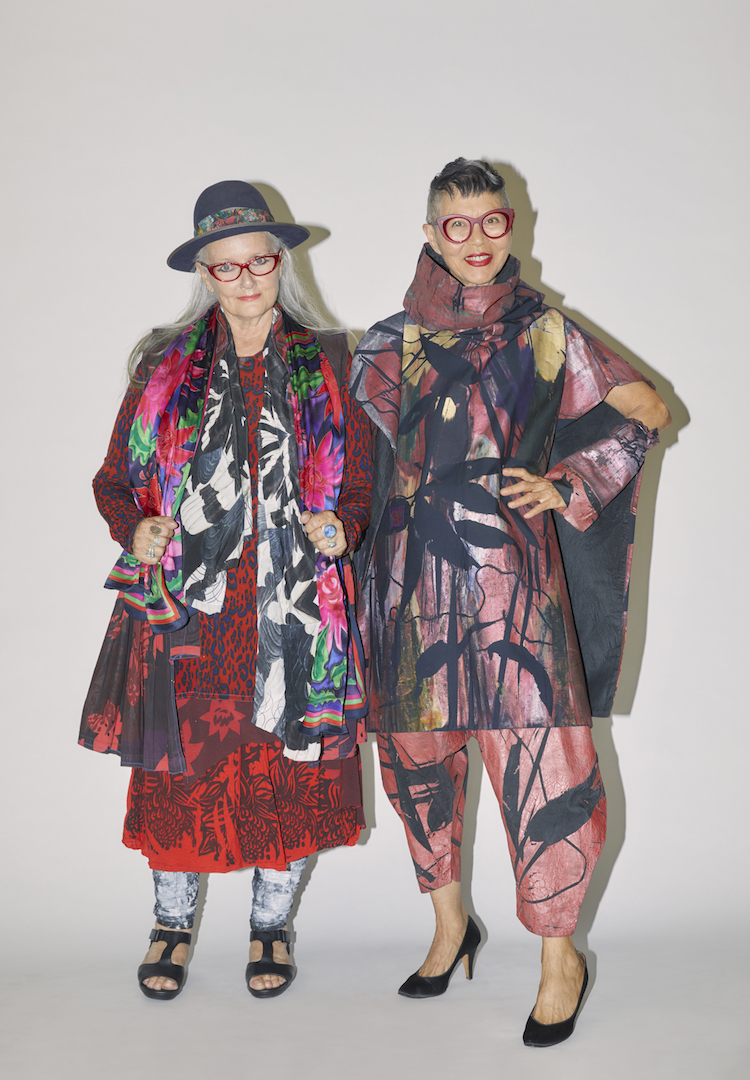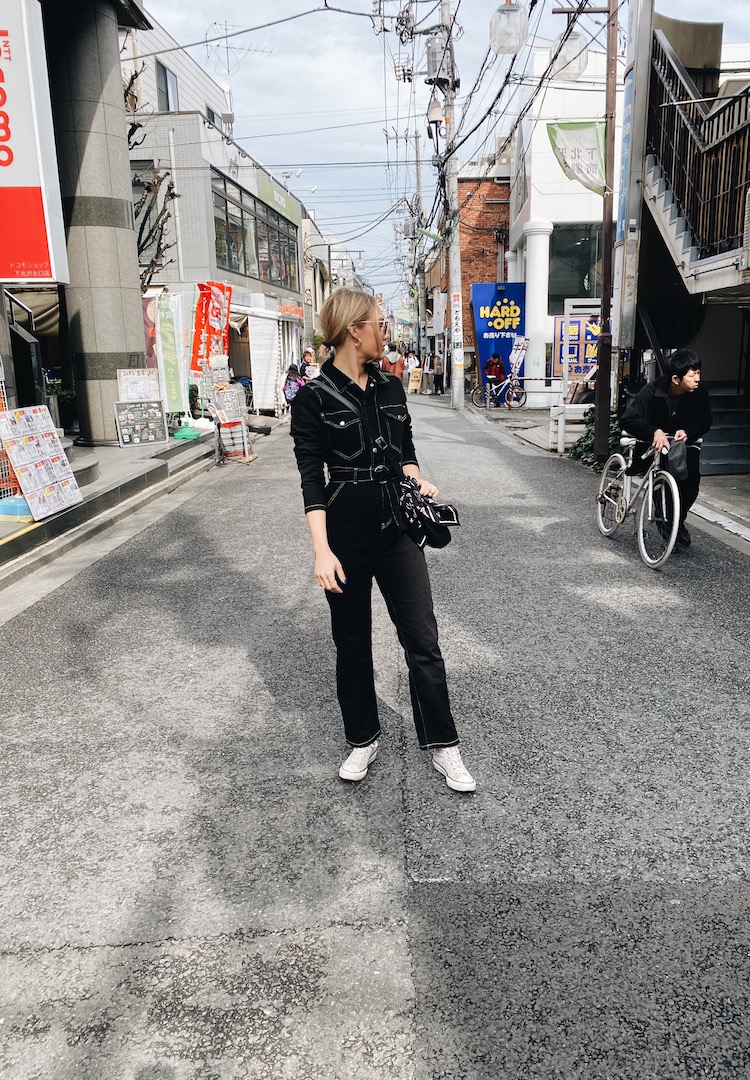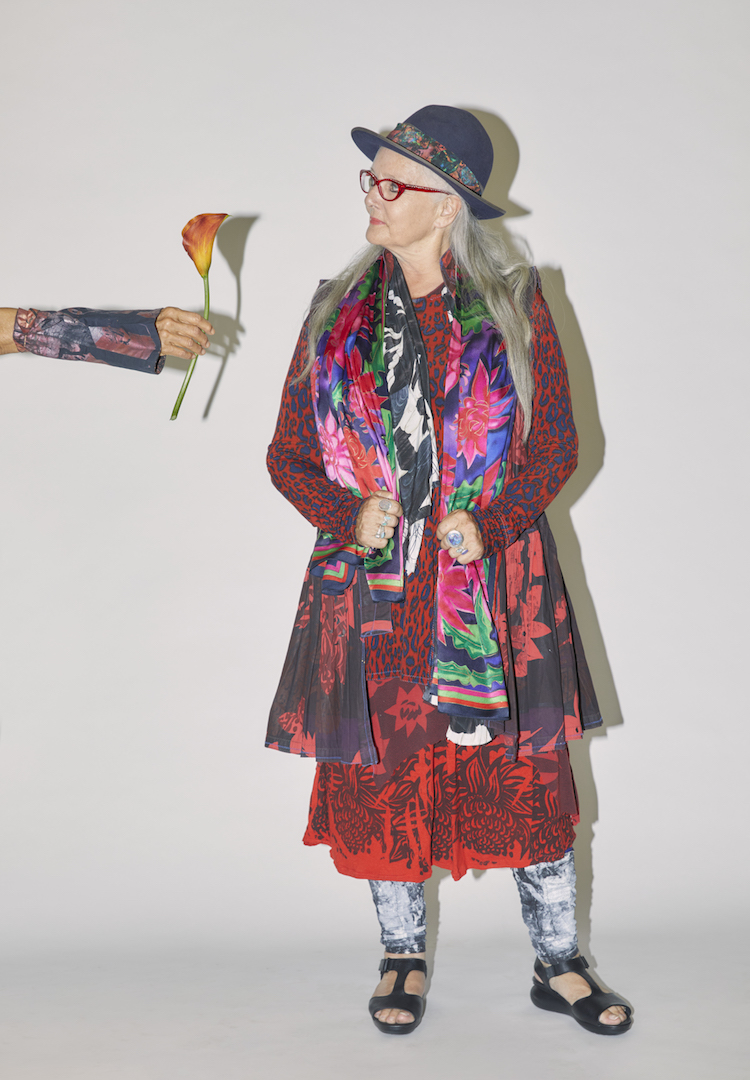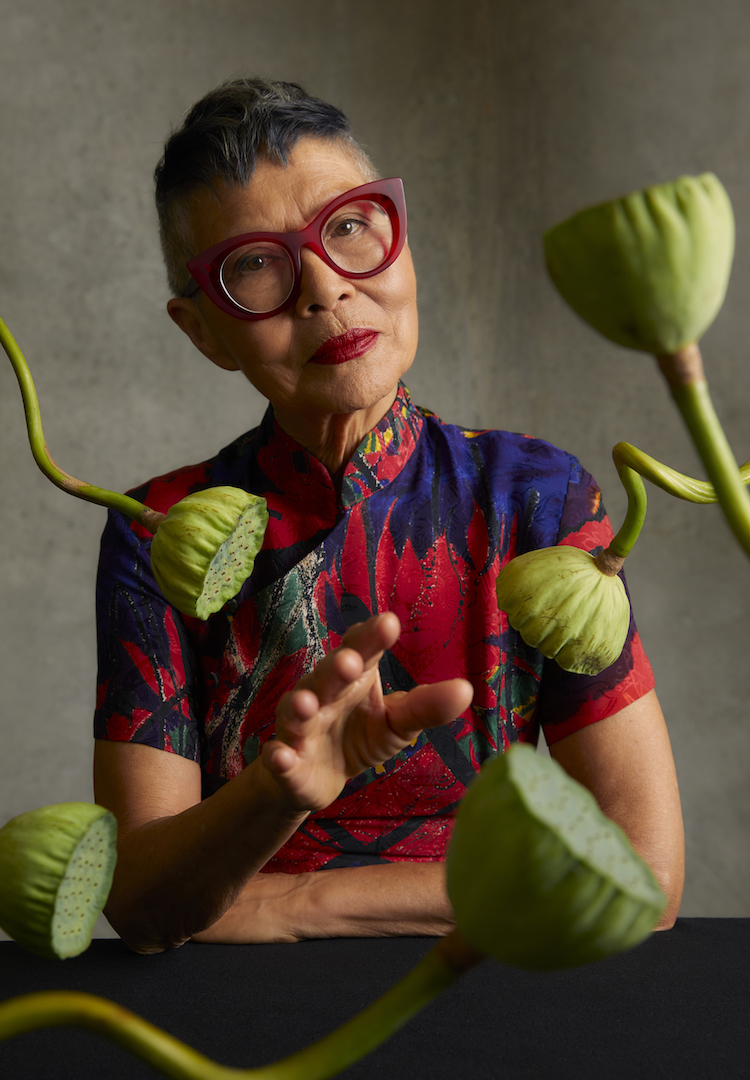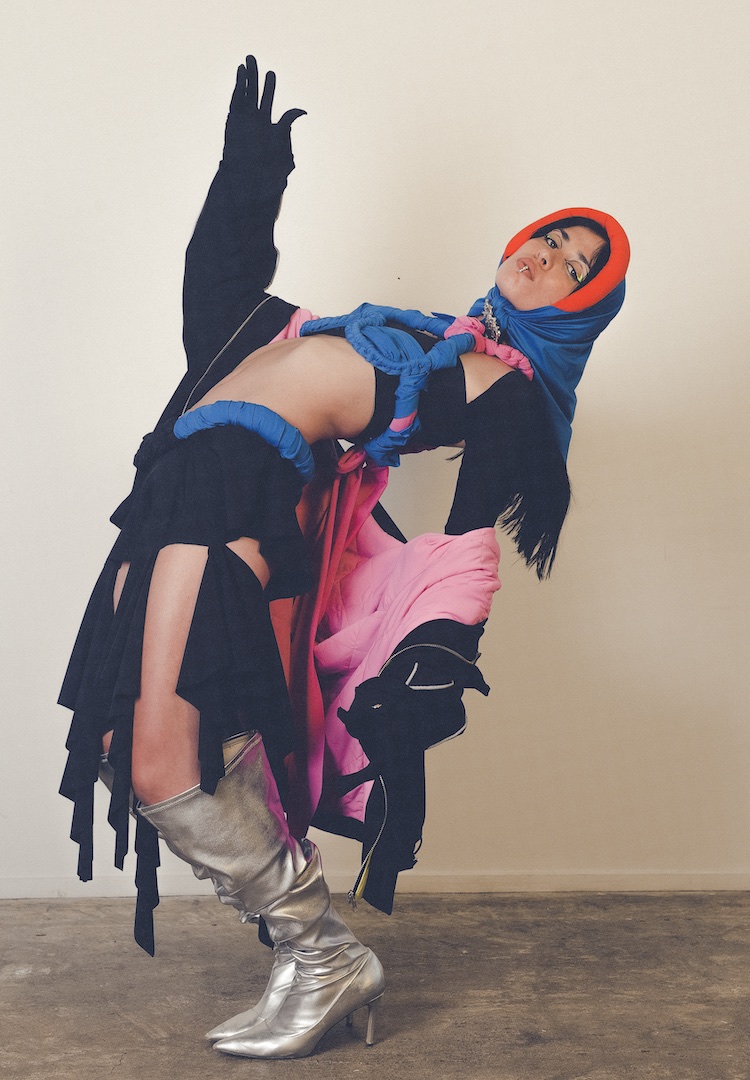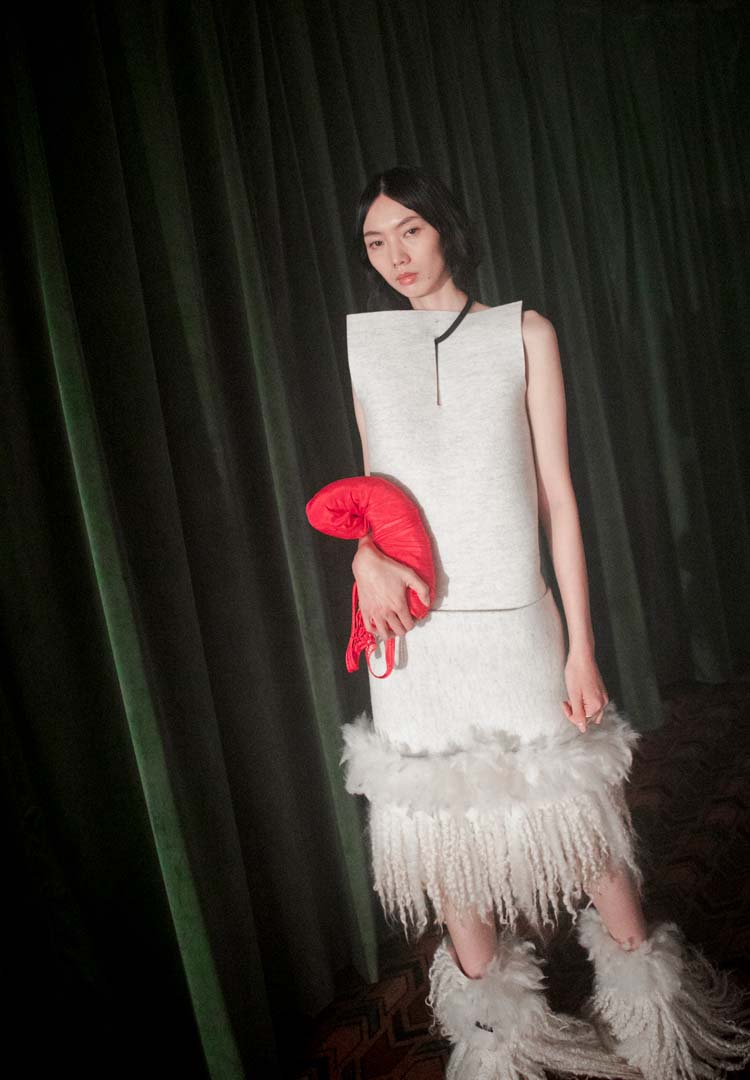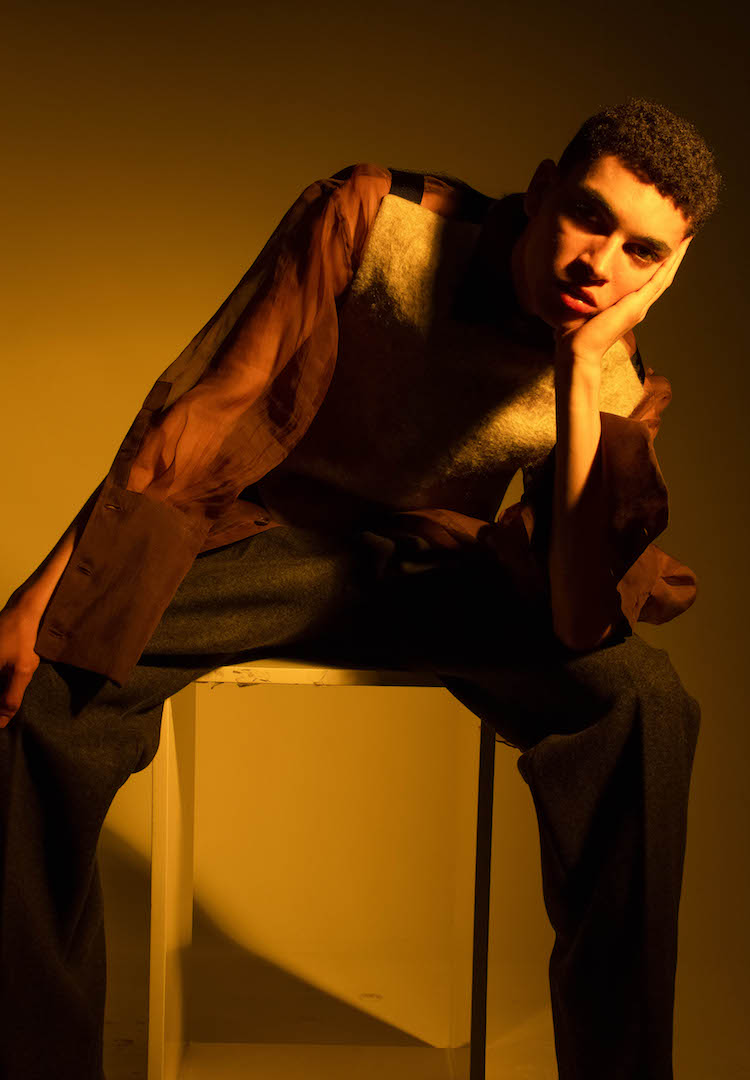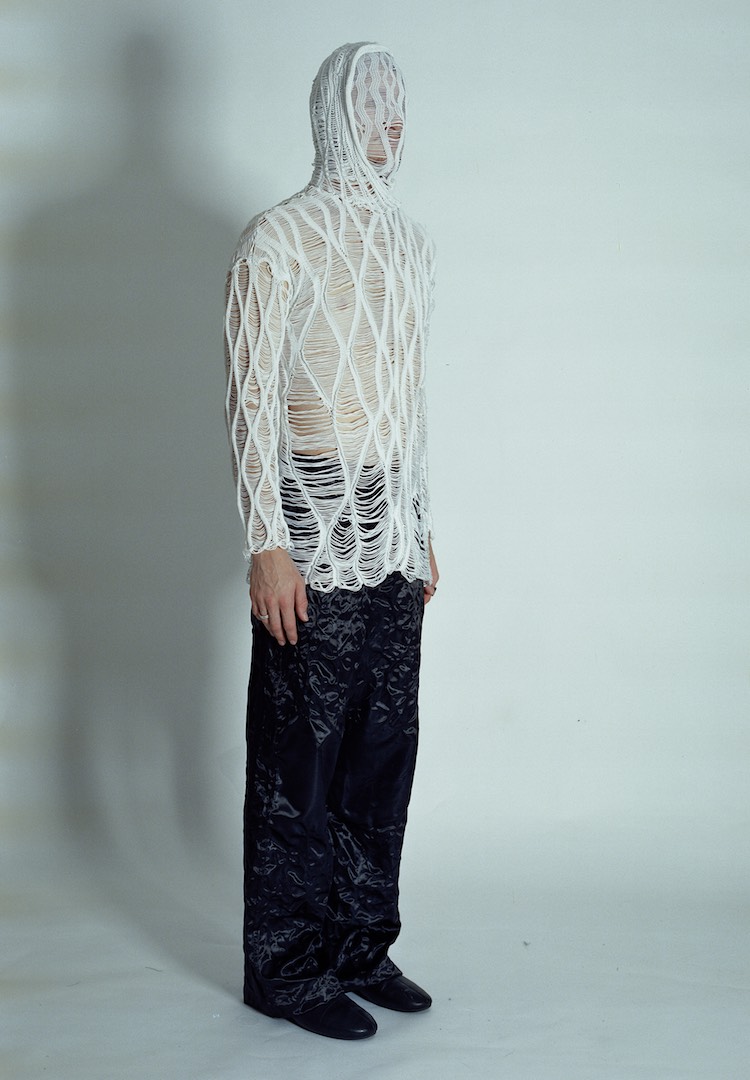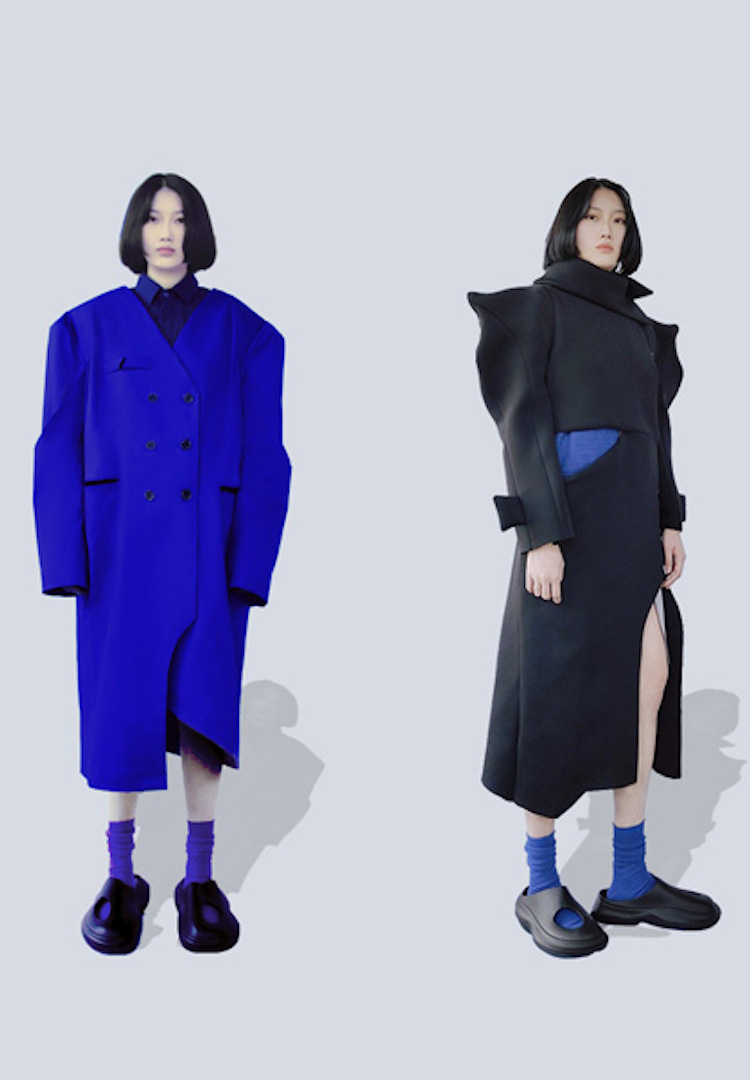Jenny Kee and Linda Jackson have the best kind of friendship
Photographer – Seung-Rok
Photographer’s assistant – Nick Turner
Hair and makeup – Tracy Terashima
Florist – Setsuko Yanagisawa
Regeneration.
The year 1973 was a milestone for Sydney. The federal voting age was lowered from 21 to 18. Prime Minister Gough Whitlam abolished the White Australia Policy. The Sydney Harbour Bridge ceremoniously opened in the heart of Circular Quay. And all the while, two women were preparing to cut the ribbon on one of Australia’s most culturally significant stores. Its name was Flamingo Park.
Known for its impossibly colourful walls, retro frocks and ’50s-inspired prints, Flamingo Park Frock Salon served as a cultural and fashion zenith. It catapulted founders Jenny Kee and Linda Jackson to icon status, showcasing just how loud, bright and unapologetic our homegrown approach could be. A global style identity was established, featuring the kinds of knitted jumpers, appliquéd wattle flowers and iridescent opal accents that would make Kath Day-Knight feel right at home.
Few have a friendship like Jenny and Linda do, that much is clear from the outset. Watching them converse, it’s a dexterous verbal dance. The only tangible way one could truly capture their sincere and soulful relationship and its subsequent impact is through something as large-scale as an exhibition. Thank God someone thought of it.
Titled Step into Paradise, the 150-piece manifesto celebrates both their inspirations and work and that of their significant collaborators. It transports viewers to the early days, showcasing Flamingo Park in its 1980s peak.
What it also captures is their intrinsic connection to their surrounding environment. The two have long pioneered activism alongside sustainable fashion, from a time when it wasn’t readily considered in the industry. Now, as the world spins on a politically, socially and environmentally turbulent axis, we invite Linda and Jenny to speak with us about their long-standing relationship with Australia’s land.
Do you remember your first impressions of each other?
Jenny: Our first impression was pretty powerful. I was so influenced by the ’40s and ’50s, and meeting Linda, she had the profile of a beautiful, chiselled, period movie star.
Linda: I had been told about Jenny through friends when I was up in Sydney for an exhibition. I was personally influenced by Asian culture and beauty, so I just remember thinking I’d found my beautiful Chinese princess.
And the reputations were correct?
J: Better. Larger than life. We had a female meeting of creative minds. And while the major friendship came later, the actual meeting of two females with the same passion, the same love, was incredible.
How would you describe each other’s personal styles?
L: Well, often we would arrive somewhere and be wearing the exact same thing. Then other times, it was the complete opposite.
J: She’s very anti-fashion these days. I’ve always been Linda’s muse. I modelled when I was 16 years old when they didn’t like Chinese models, so I never got any work. But then I became Linda’s model wandering through the bush, meditating as she took the most exquisite photos wearing her clothes. No makeup, just a natural, beautiful experience.
Having both worked with vintage fashion overseas, how did you find Australia’s second-hand landscape when you returned?
L: Well I didn’t think it really had one, but it did. Melbourne had everything. Because of the weather, high-quality vintage would end up in second-hand shops all over the laneways of the city. Wealthy women who had the best of everything would buy new things each season, and their old stuff would end up in the stores.
J: Melbourne to me was like London, except it wasn’t. It was fresh, open and sunny, and people definitely dressed smarter.
I know sustainability is important to you. Did you ever feel conflicted that you were contributing to an industry that perhaps wasn’t the most ethical?
J: No, because everything we did was small and bespoke. We made a small imprint. In Asian countries, weaving clothing is a facet of [a person’s] spirituality.
L: Your mother made your clothes to wear, her mother made her children’s clothes. In every country around the world, there was a historical element to what everyone was wearing, and then it turned into giant industrial business. Before sustainability was even a word, we were doing it. Hand-sewing, hand-dyeing, hand-knitting, caring where the textiles come from. We knew it was a toxic industry, which meant caring about every single element. We were very small, so we had the luxury of being able to do it like that.
How important has activism been in your career?
L: Every step we take is part of activism, really. With the clothes we have done, the people, the communities we visit, it’s all part of a bigger picture.
J: I was always actively participating. I was arrested for protesting the deforestation all through Coolangubra and Eden. You can’t even think of designing a koala knit and then not using that same passion to save them. These areas of New South Wales had the oldest-growth trees that had ever been cut down, and this was their home.
That was back then, and look at it now. We are actively fighting for the species not to be extinct. It’s the whole planet, of course, but the whole world is looking at a fire that just swept through half of our country. I keep looking at those images and know that koalas are screaming in the trees as they burn. It’s not just touching Australians but people all across the world.
I know both of you have been personally impacted by the bushfires, how has it been?
J: I actually saw it coming towards me. I was the only one who could see it because my view is very particular, so I knew that fire was close. I rang the RFS and told them, and that was a powerful experience. I’ve lived in the bush for 43 years, so I’ve experienced a lot of fires. I know what fire is, but this was savage. As far as I know, for the last 200 years on that particular piece of bushland, there has never been a fire like it.
L: Our cottages burnt quite completely. We had to keep our eye on the wind just to make sure nothing disastrous happened. It takes a bit of time to adjust to what has happened, but we are okay. And now we look to rebirth and regeneration.
What do you want people to get out of going to the exhibition?
L: The exhibition is more relevant now than ever. It’s about looking after Mother Nature, and looking to our country for inspiration. We need to make sure people might want to keep looking after it.
J: Back then, people like us were always referred to as ‘greenies’ – but now, the green revolution has got to become a way of life. In this time, to go see the show now, knowing how the bush is being ravaged, it’s even more special. Linda and I have always sought our inspiration from being in nature. Our whole creed has always been to preserve this beautiful environment – it’s just more potent now.
Of all the things you’ve done together, what has been your favourite moment?
L: It’s now. This exhibition has made us reflect, together, and learn about what each other has been doing for the last 30-something years.
J: I’m grateful for 40 years of friendship. Back in 1982, Linda and I walked through burnt bush where she took incredible photos of me in some of my favourite outfits. The waratah and grass tree clothes, which I’m wearing in this shoot. You can see the photographs in the exhibition. To see the same bush burning, at the same time our exhibition is on, it’s brought everything full circle. Our love and care for this country has come full circle. Here we are with the same creative passion, fighting and working to help this country. My property got burnt, Linda’s property got burnt. That’s what I find really metaphorical.
Jenny Kee and Linda Jackson: Step Into Paradise is now on at Sydney’s Powerhouse Museum until March 22. Exhibition curator Glynis Jones is presenting a talk at the Virgin Australia Melbourne Fashion Festival on Friday March 13. Tickets are now available.
This article was originally published in Fashion Journal 194. You can read it here.


